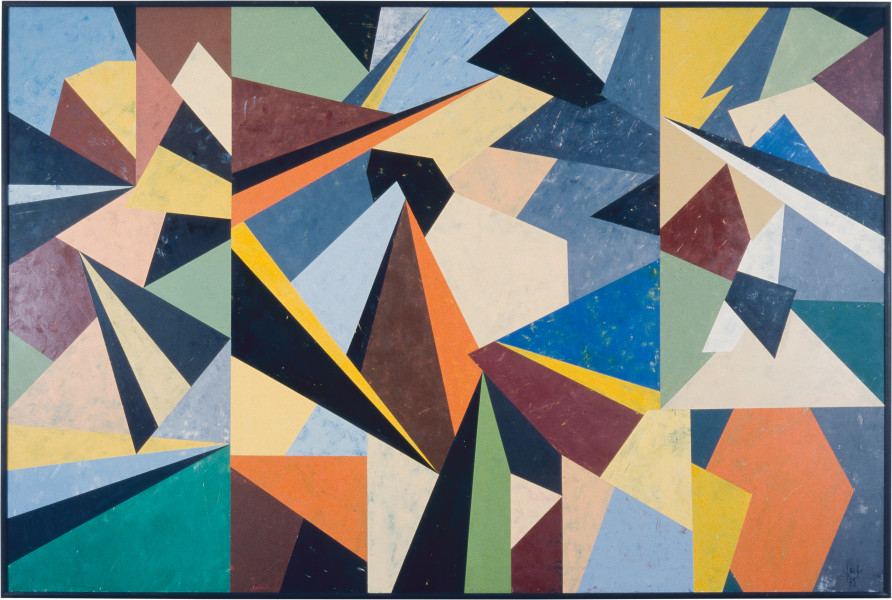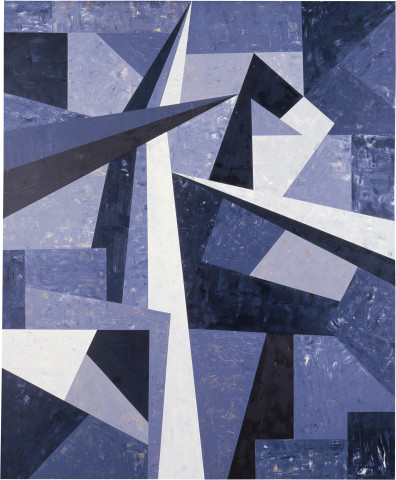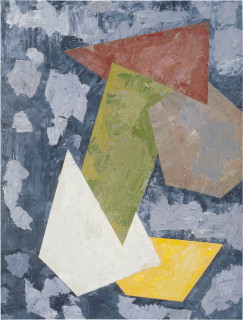Robert Jack's third solo exhibition at Roslyn Oxley9 Gallery.
Exhibition Dates: 11 September – 30 September 1984
Robert Jacks has largely been thought of as a minimal painter and draughtsman. Indeed in 1983 'Melbourne Mood - Cool Contemporary Art' arranged by the Australian National Gallery in Melville Hall. In spite of this it is possible to find within his drawings in particular a structure which undoubtedly relates to experience of landscape. These emerge during a time when he was in America and left New York to work in Texas. There are references within these works not only to the abstract structure of Navajo rugs, but also to the distinctive geology of the region where jagged fissures cause distinctive markings along the fault lines. These jagged drawings gradually built together and began to inform the surface with a kind of cubist solidity.
There is an intermediary period where in returning to painting, and in particular a series of watercolours, we find quite Cezanne-like constructions where geometric solids almost begin to take on the form of rocks and houses. The first impression, however, of the oil paintings of this period is of large flat areas divided by sharply angular lines into an essentially flat surface with relatively muted colour. In places stronger colour appears from underneath but this has been suppressed by greyish overpainting. These flat forms, however, began to suggest directions in space and the interlocking becames an overlapping.
In 1981 the similarity to Cezanne supersedes any possible similarity that could have been seen in the flat shapes to Poliakoff. The quality of paint becomes richer and more deliberately handled, in places it is almost plastered on approaching and defining edges with a physicality that is absent in his more minimal works. A theme at this time becomes a divided canvas. This helps to re-assert the fact that we are still being asked to consider a two dimensional surface. These are modernist works in the best tradition. The shallowness of the possible pictorial space is indeed limited by this arbitrary central division. Already within these works we discover elements that are perhaps not quite so geometric as they at first appeared. One of these is a bird-like figure that has a strange quality which reminds us of Sepik artefacts; particularly bird totems.
Another element which starts to appear on the right hand side of the painting looks remarkably like a lamp base with a lamp shade on top of it. Towards the upper centre of the composition a
strange arrangement of form begins to look suspiciously like the fleeing figure in 'Guernica'. Indeed the spikey angularity of the drawing becomes more and more reminiscent now of Picasso. The canvases are divided no longer into two but into three, which also emphasises the horizontal nature of 'Guernica'. This curious combination of elements from an existing major modernist work creates an intriguing ambiguity and sense of deja vue.
The same basic composition is repeated again and again and given this relatively static linear arrangement Jacks has been freed to activate the colour taking one element at a time. The paintings in this exhibition all relate to those references from Picasso while in some the totem figure is more important than others. It is to the colour,
however, that Jacks asks us to pay attention.
The handling of the paint has also become more critical and if anything is perhaps simplified from the earlier textured quality of the grey which by now has completely disappeared. Nonetheless, one
is always aware that the painting has been a process of adjustment and growth. It would be hard to consider these intuitive and vibrant works in the context of cool school now.
Anthony Bond





















